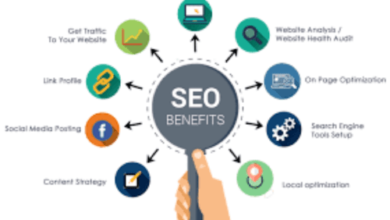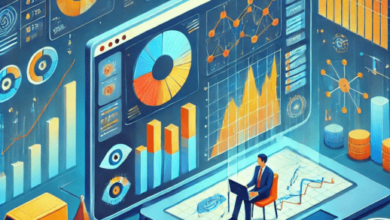The Evolution of Website Design in San Diego: From Aesthetics to Functionality

Website design has experienced a dramatic transformation over the last two decades, and nowhere is this more evident than in the thriving digital hub of San Diego. Early designs focused heavily on visual appeal, often emphasizing flashy graphics, colors, and effects that were meant to “wow” visitors. Over time, however, the focus shifted toward usability, speed, and functionality. Today, website design San Diego is recognized for blending modern aesthetics with user-centered strategies that align with business goals, ensuring that websites are not only beautiful but also effective.
Early Days: Design as Digital Art
In the early 2000s, websites were primarily viewed as digital business cards. Designers leaned on bold color schemes, animated GIFs, and Flash-based designs to make an impact. While visually striking, these websites often came at the expense of functionality. Pages loaded slowly, navigation was confusing, and accessibility was rarely a priority.
For example, a restaurant in San Diego might have once relied on a Flash-heavy homepage with looping music and animated menus. While it drew attention, it made ordering online or finding directions cumbersome. The takeaway here is clear: while aesthetics mattered, functionality was not yet a core focus.
Execution Tip: If your current website still relies on outdated design elements like Flash or image-heavy graphics, consider redesigning with streamlined layouts and faster load times. Prioritize content delivery over decoration.
The Shift Toward Usability and Navigation
As businesses realized that users valued easy navigation, website design began evolving to prioritize structure and organization. According to Thrive Internet Marketing Agency, clean navigation menus, logical page hierarchies, and simplified layouts replaced cluttered visuals. This era marked the birth of websites designed to serve users first, not just impress them.
For instance, a local San Diego law firm transitioned from a brochure-style site to a user-friendly layout where visitors could easily find practice areas, attorney bios, and contact information within one or two clicks. This shift improved conversions and kept visitors on the site longer.
Execution Tip: Map out your website’s core objectives (e.g., book an appointment, request a quote, or buy a product). Then, design a simple navigation menu that leads users to these actions in no more than three clicks.
Rise of Responsive and Mobile-First Design
The explosion of smartphones and tablets forced a major rethink in website design. A site that looked great on desktop but was unreadable on mobile was no longer acceptable. Responsive design—layouts that adjust seamlessly to different screen sizes—quickly became standard.
San Diego’s hospitality industry was one of the first to adapt. Hotels and tourism sites saw that most bookings were being made on mobile devices. By switching to mobile-first responsive designs, they ensured smoother booking processes and better user satisfaction.
Execution Tip: Test your site across multiple devices. Use tools like Google’s Mobile-Friendly Test to identify issues. If mobile usability scores low, redesign with a “mobile-first” approach, starting from the smallest screen and scaling up.
Integration of Functionality: Beyond Looks
Modern websites are no longer just about appearance—they function as business tools. Features like e-commerce capabilities, booking systems, chatbots, and lead capture forms make websites a central part of a company’s operations.
Take for example a San Diego fitness studio that integrated a booking platform directly into its site. Instead of requiring visitors to call, users could now schedule and pay for classes online. This not only streamlined the process but also boosted overall revenue.
Execution Tip: Identify repetitive business tasks (appointment booking, inquiries, payments) and explore integrations that automate these within your site. Many content management systems (CMS) offer plug-and-play solutions.
Emphasis on Speed and Performance
Today’s users expect websites to load instantly. A slow site can drive away potential customers, especially in competitive markets like San Diego’s digital landscape. Designers now focus on compressing images, optimizing code, and using reliable hosting to improve performance.
For instance, a San Diego e-commerce store saw a 30% increase in sales after optimizing its site speed through image compression and a content delivery network (CDN). This improvement reduced bounce rates and increased conversion rates.
Execution Tip: Run your site through tools like GTmetrix or Google PageSpeed Insights. Implement recommendations such as browser caching, image optimization, and minifying CSS/JavaScript.
User Experience (UX) and Accessibility Take Center Stage
With more awareness of inclusivity, modern website design emphasizes accessibility. Features like alt text for images, keyboard-friendly navigation, and ADA compliance are now essential. A well-designed website doesn’t just serve the majority but ensures everyone can interact with it effectively.
A San Diego nonprofit, for example, redesigned its site to meet WCAG guidelines, ensuring that visually impaired users could navigate via screen readers. This not only broadened their audience reach but also positioned them as socially responsible.
Execution Tip: Conduct an accessibility audit of your site. Add descriptive alt text, ensure color contrasts are readable, and include captions for multimedia. Use accessibility checkers like WAVE to catch overlooked issues.
The Future: Personalization and AI
Looking ahead, personalization and artificial intelligence (AI) are shaping the future of website design. Websites are starting to adapt dynamically, showing different content based on user behavior, location, or preferences. Chatbots and AI-driven recommendations enhance user interaction and create a more engaging experience.
For example, San Diego’s retail sector is increasingly using AI-powered websites that recommend products based on browsing history, much like Amazon. This creates a customized shopping journey that boosts engagement and sales.
Execution Tip: Begin with small steps like integrating a chatbot for customer inquiries or using analytics to personalize homepage banners. Over time, evolve into advanced personalization strategies powered by AI.
Conclusion: From Art to Function
The journey of website design in San Diego mirrors broader global trends but is shaped by the region’s unique industries—from tourism and hospitality to law firms and tech startups. What started as digital art has transformed into a functional, user-centered tool that drives business success. The evolution underscores a central truth: design must serve both form and function. Today, businesses that embrace this balance position themselves to stand out in the crowded digital space of website design San Diego.




